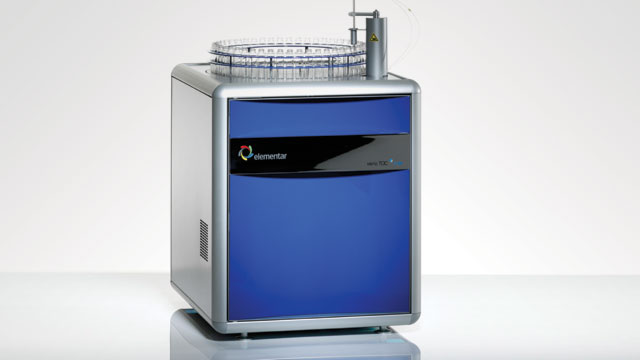How Standardized Soil Testing with a TOC/TNb Analyzer Works
The Haney Soil Test has made a big impact in the study of soils and is becoming easier and more accurate than ever.

Problem: A lack of standardization in the methodology to better understand soil health and an instrument to properly analyze water with heavy particulates.
Solution: The Haney Soil Test, a standardized health test for soil developed by Rick Haney at the USDA-ARS, has made a big impact in the study of soils and now, with updated technology, is becoming easier and more accurate than ever. Samples of soil are dried and the available nutrients are extracted using standard optimized guidelines for consistency. The water-extracted total organic carbon (TOC) along with the water-extracted total nitrogen (TN) are measured to show the C:N ratio. The C:N ratio serves as an important indicator to predict microbial activity in the soil. These two parameters, TOC and TN, are now readily measured with greater precision by Mr. Haney using the Elementar vario TOC cube.
The Elementar vario TOC cube allows measurement of TOC and TN content of soil extracts in a single sample run even for samples of high particulates, with its specially designed particulate method. Furthermore, this mode of operation analyzing samples containing small amounts of particulates, like in soil extracts, is performed with nearly the same precision as particulate-free samples.
Related Article: Human Activity Affecting Microbes in Soil
Automated sample dosing can be performed for up to 50 liquid samples (incl. stirring) and with an easily exchangeable automated sample feeding module for solid samples, soil labs can readily switch back and forth between solid and liquid analyses. The autosamplers are fully integrated in the basic unit and do not require additional bench space. Changing the sampling system from solids to liquids and vice-versa can be done within a few minutes.
The measuring principle for all modes of operation is the oxidation of bound carbon into CO2. The liquid sample is directly injected into the combustion chamber at 850°C using zero air for the carrier gas stream. The gas is dried and the flow is stabilized and measured by means of a nondispersive infrared detector (NDIR).
A connected PC calculates the total carbon concentration (TC) from the measured CO2 signal and the injected sample volume. Inorganic carbon (TIC) can be measured automatically by acidifying the sample in a sparger, stripping and detecting the released CO2. Total organic carbon (TOC) content is calculated from the difference of the TC and the TIC (TOC=TC-TIC). In addition, the total bound nitrogen (TNb) can be measured with the TOC, in the same analytical run, by means of an NO sensitive electrochemical (EC) detector.
All parameters such as TOC, NPOC, TC, TIC, DOC, POC, and TNb can be measured with the same basic unit. Detection of ppb level C for ultrapure water, undiluted samples to 100,000 ppm C, industrial wastewater, or up to 30 mg C absolute in solids represents a measuring range which cannot be met by any other instrument.
Using this method of analysis in conjunction with the vario TOC cube, the C:N ratio can be accurately determined and considered in any soil amendments.
For more information, visit http://www.elementaramericas.com/analyzers/vario-toc-cube/
